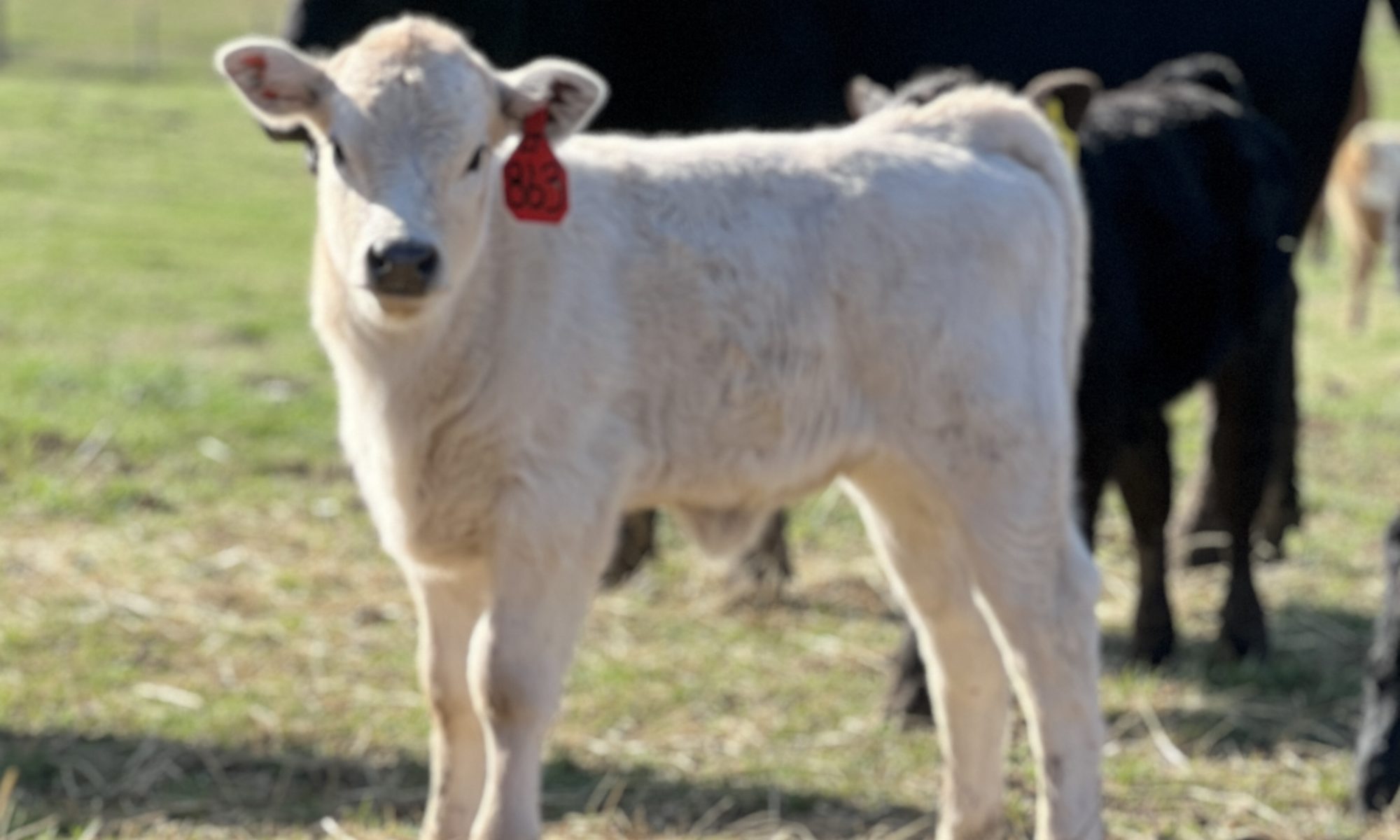

Dr. Troy Rowan
Assistant Professor
UTIA Genomics Center for the Advancement of Agriculture
P: 865-974-3190
Originally Published in Cattlemen’s News: April Article
Co-Authored by Dr. Saulo Menegatti Zoca
As a geneticist and reproductive physiologist, we always have bulls on our minds in some way, shape, or form. With the breeding season just around the corner, we wanted to lay out some essential things to be mindful of regarding our bull battery. Whether you have 10 cows or 1,000, your bulls have a massive impact on a herd’s short and long-term success. Making the optimal bull selection decision is one part of this, but ensuring that it is equipped to deliver its superior genetics to your cow herd is another thing altogether. Therefore, we will lay out some things to remember when selecting a bull and management strategies we can do that ensure it delivers the genetic potential we invested in.
Genetics: Nailing the bull selection decision
The genetic potential contributed to your herd by your bulls is hard to overstate. In a one-bull herd, the last three purchases make up 87.5% of your current calf crop’s genetics (50% from sire, 25% from maternal grandsire, 12.5% from maternal great-grandsire). When we purchase bulls, we’re nearly always operating with limited information. We rarely have the benefit of buying a bull with multiple calf crops worth of information that tells us how its progeny are likely to perform. To combat this lack of information and mitigate risk, we have numerous selection tools that allow us to be more confident in knowing a bull’s true genetic potential.
Make a plan
The bull purchase is a high-stakes decision, so it’s imperative that we attack it with a plan in mind. Most bulls aren’t one-size-fits-all for particular operations. With profitability as our chief goal, we need to match bulls’ strengths to the unique needs of our operation. For example, selecting a carcass-focused bull likely doesn’t move the needle if we sell only weaned calves and retain females. It’s essential to understand our operation’s sources of revenue (e.g., weaned calf weight) and our costs (e.g., cow maintenance) and align selection decisions with each of these.
Use a selection index
When selecting a bull, it is always with multiple traits in mind. Depending on the breed of bull you are searching for, they might have EPDs for nearly 30 traits! Economic selection indexes distill these traits into a single value representing the difference in per-calf profitability between bulls. Selection indexes balance multiple traits simultaneously, accounting for how they contribute to profitability. These allow us to differentially weigh more or less important traits and account for the genetic correlations between them. Indexes act as EPDs for profit in a given production scenario, presented in real-world dollars. When using an index in your selection decisions, it must match your breeding goals. For example, using a terminal index (e.g., $B, CHB$, TI, TSI) in a herd where replacement females are kept can create problems.
Reproduction: Thinking about herd fertility
When thinking about profitability, the ability of a bull to generate a pregnancy is paramount! Having a “bad bull” that cannot do this can have long-term consequences. Generating pregnancies within the first 21 days significantly drives a herd’s overall profitability. With that, the impact of a “good bull” in your herd is often overlooked as the bull is just doing what is expected; however, the negative effects of a “bad bull” are easy to see. Subfertile bulls decrease the size of a calf crop and may delay pregnancy, extending the calving season and reducing the amount of total weaned calf weight. Thus, selecting bulls that have great genetic potential but also adequate fertility potential is paramount. Now the question becomes, what makes a “bad bull”?
The importance of a breeding soundness exam
“Bad bulls” are those classified as infertile or subfertile. The only method to evaluate the fertility potential of bulls is through a breeding soundness exam (BSE). During the BSE, bulls will be evaluated for their physical structure, including feet and legs, prepuce and penis, mouth, eyes, reproductive organs (through rectal palpation), scrotal circumference, and semen quality. It is important to notice that semen evaluation is only one of the components of a BSE. After a BSE, bulls will be classified in one of three ways, unsatisfactory, deferred, or satisfactory potential breeders.
Unsatisfactory potential breeders are those bulls that fail at least one of the three portions (physical soundness, scrotal circumference, semen quality) of their BSE without the possibility of recovery. A bull classified as deferred fails that BSE but has the potential to recover from the problem noticed, and upon passing a new BSE may regain its breeding ability.
So my bull passed his BSE, now what?
Now that we are left with those bulls that passed their BSE, we still need to pay attention to those bulls, for several reasons: 1) A BSE is a snap shot of the bulls fertility potential on the day of evaluation, so if anything happens to that bull between evaluation and breeding season or during the breeding season that could affect their fertility potential, thus retesting bulls before each breeding season is the best way to prevent problems with your pregnancy rates; 2) BSE does not evaluate siring capacity, thus we don’t know how many cows that bull can actually breed, be mindful that younger bulls in general can breed less cows than mature bulls (a good “rule of thumb” is that younger bulls can breed 1 cow per month of age: 15 month old bulls would be good to breed 15 cows); 3) social dominance is not evaluated, when using multiple bulls per breeding group, bulls will develop a hierarchy and that may affect how many cows are sired per bull; lastly, but not least 4) libido is not evaluated in a BSE, thus, some bulls may pass a BSE but have no interest in breeding cows, the only way to evaluate that is to observe the bull’s behavior around cows in estrus.
Evaluate the whole picture
We have fantastic tools at our fingertips to aid in bull selection. However, we must remember what these tools tell us and what they don’t. EPDs and indexes are our best statistical estimates of an animal’s genetics. They don’t tell us about the actual performance of individual calves; instead, they give us an idea of what we’d expect from a sire’s calves on average. We also have to remember that even with the best set of EPDs/indexes in the world, a sire that is structurally unsound or who hasn’t passed a BSE will not be able to deliver his superior genetics to your cowherd. As such, we must use EPDs alongside thorough phenotypic evaluations and breeding soundness exams when making selection decisions.
